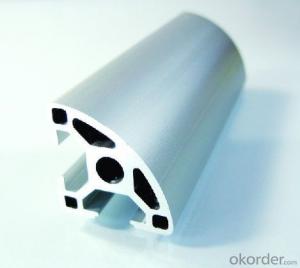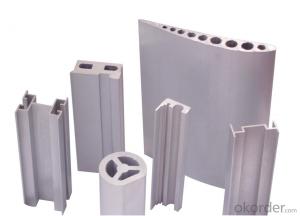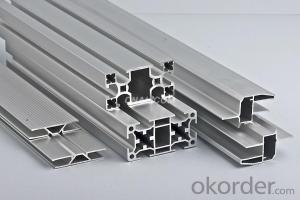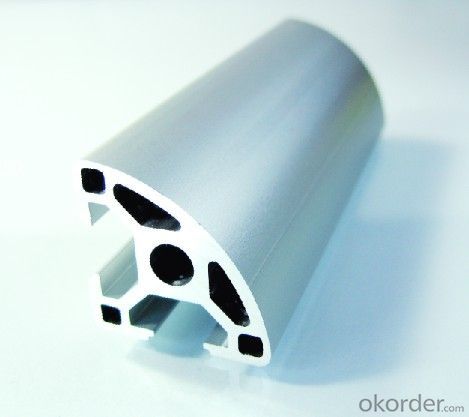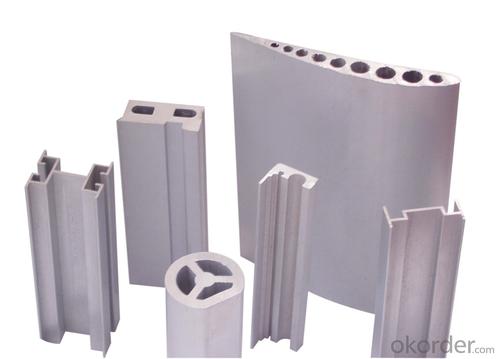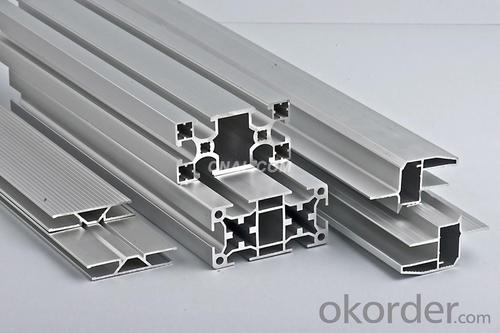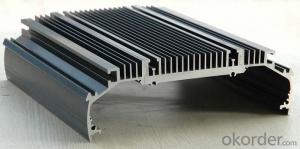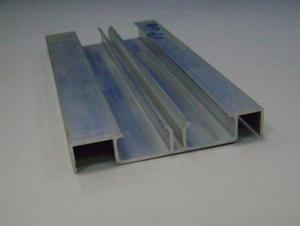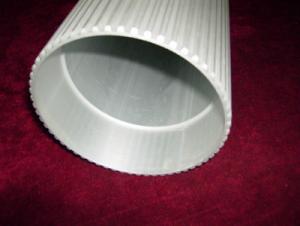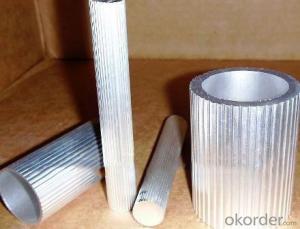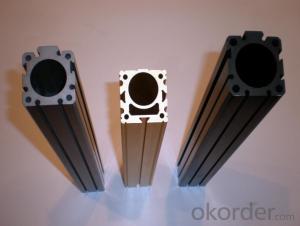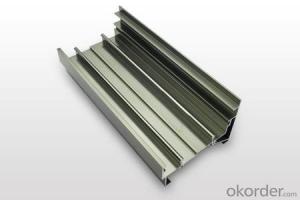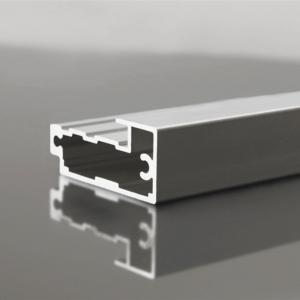Aluminum Extrusion Profiles Uk - Architectural Aluminium Profile Extrusion
OKorder Service Pledge
OKorder Financial Service
You Might Also Like
Aluminium is a relatively soft, durable, lightweight, ductileand malleablemetalwith appearance ranging from silvery to dull gray, depending on the surfaceroughness. It is nonmagnetic and does not easily ignite. A fresh film ofaluminium serves as a good reflector (approximately 92%) of visible lightand an excellent reflector (as much as 98%) of medium and far infraredradiation. The yield strength of pure aluminium is 7–11 MPa,while aluminium alloys have yield strengths ranging from200 MPa to 600 MPa. Aluminium has about one-third the densityand stiffness of steel. It is easily machined,cast, drawn and extruded.
Features:
Material | Alloy 6063,6061,6005or according to customer’s choice |
Temper | T3, T4, T5, T6 |
Surface | Anodize, electrophoresis, powder coating, PVDF coating, wood grain painting, matted, etc. |
Length | Coating 6.5 meters, Anodizing 6.5 meters, Mill finish 5 meters |
Application | Industrial, electrical equipment(TV set, air conditioner, refrigerator, computer), decoration,construction, transportation |
Custom Made | We can package following with customer's request. |
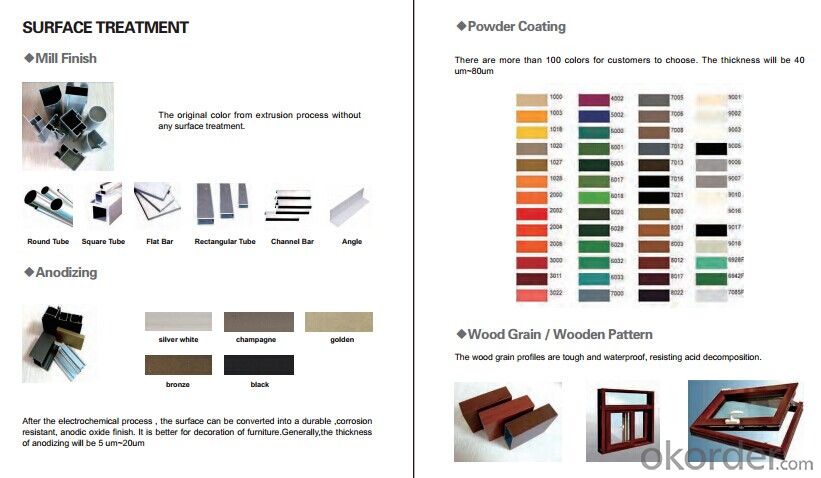
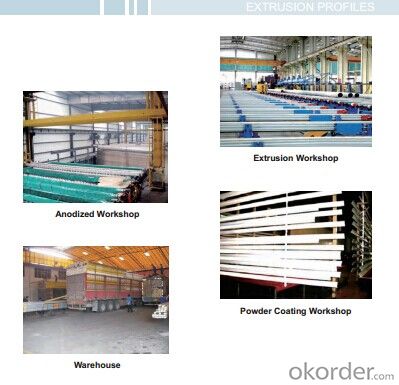

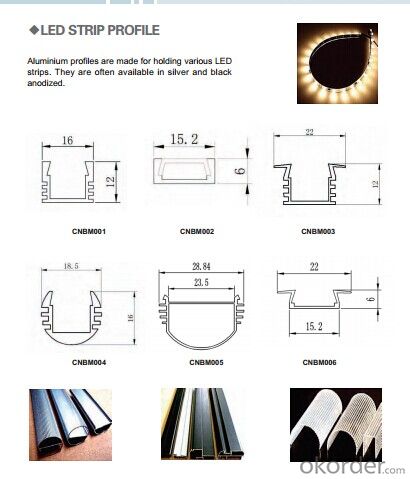
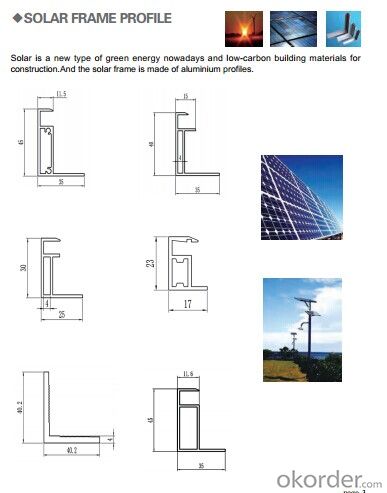

- Q: What are the different colors and finishes available for aluminum profiles?
- Aluminum profiles offer a wide array of colors and finishes for customization and design versatility. The available options include anodized finishes, which involve creating a durable oxide layer through an electrochemical process. This not only provides color choices like silver, black, white, bronze, and gold but also enhances corrosion resistance and durability. In addition to anodizing, powder coating is a popular method for achieving different colors and finishes. It involves applying a dry powder electrostatically and then heat-curing it for a smooth, strong, and uniform result. This technique offers a broad range of colors, including metallic, matte, gloss, and textured finishes. Moreover, liquid paint can also be utilized to paint aluminum profiles, offering limitless color possibilities. This makes it perfect for projects with unique design requirements, as the finishes can be customized to match specific color needs. To summarize, aluminum profiles can be finished with anodized options like silver, black, white, bronze, and gold, as well as powder coating finishes such as metallic, matte, gloss, and textured. Additionally, liquid paint allows for virtually any desired color. These choices ensure design flexibility and enable aluminum profiles to complement various architectural and industrial applications.
- Q: How do you protect aluminum profiles from scratching or damage?
- There are multiple methods available for safeguarding aluminum profiles against scratches or damage. To begin with, a commonly used approach involves applying a protective coating or finish. This can be accomplished by utilizing paints, lacquers, or powder coatings that serve as a barrier between the aluminum surface and external elements. These coatings not only enhance the appearance but also offer protection against scratches, corrosion, and other forms of damage. Another effective temporary solution is the utilization of protective film or tape. These films or tapes can be directly applied onto the aluminum profiles, acting as a shield. Generally transparent, these films can be easily peeled off once the profiles are installed or ready for use. A different technique involves handling and transporting the aluminum profiles with caution. This entails the use of appropriate handling equipment, such as gloves, to avoid direct contact with the surface. Additionally, the use of protective packaging materials like bubble wrap or foam can provide cushioning during transportation, preventing scratches or dents. Regular cleaning and maintenance of the aluminum profiles is also crucial. Dust, dirt, and debris can act as abrasives, causing scratches over time. Cleaning with a soft cloth or sponge and mild detergent on a regular basis can help eliminate these particles and preserve the profile's appearance. Lastly, implementing proper storage practices is of utmost importance. Storing aluminum profiles in a dry and clean environment, away from sharp objects or heavy items, can minimize the risk of scratching or damage. The use of racks or shelves with protective padding can provide an additional layer of protection. By adhering to these measures, aluminum profiles can be effectively safeguarded against scratches or damage, ensuring their durability and preserving their aesthetic appeal.
- Q: What are the standards and regulations that control the use of aluminum profiles in construction?
- <p>Yes, there are several standards and regulations that govern the use of aluminum profiles in construction. These include international standards such as ISO 7039 and ISO 8039, which specify requirements for aluminum alloy extruded profiles. In the United States, the American Architectural Manufacturers Association (AAMA) provides guidelines, and the Aluminum Association sets standards for aluminum products. European standards like EN 755 and EN 12206 cover aluminum extrusions for general purposes and structural applications. Compliance with these standards ensures the safety, durability, and performance of aluminum profiles in construction projects.</p>
- Q: This question asks if aluminum profiles can be utilized in the construction or design of interior wall systems.
- <p>Yes, aluminum profiles are commonly used for interior wall systems. They offer numerous benefits such as durability, lightweight, and resistance to corrosion. These profiles can be used in various applications, including partition walls, decorative panels, and structural supports. Their versatility allows for a wide range of design possibilities, and they are easy to install and maintain, making them a popular choice in modern interior design and construction.</p>
- Q: How do you cut aluminum profiles?
- If you need to cut aluminum profiles, there are a variety of methods available to you depending on the tools and equipment at your disposal. Here, we will discuss three commonly utilized techniques: 1. Power Saw: To effectively cut aluminum profiles, a power saw like a miter saw or circular saw equipped with a specialized carbide-tipped blade designed for metal cutting is recommended. Adjust the blade to the appropriate speed and angle for your desired cut, and carefully guide the saw through the profile, ensuring a smooth and precise cut. 2. Hacksaw: If power tools are not accessible, a hacksaw is a cost-effective and readily available alternative. Select a fine-toothed blade designed for cutting metal and securely fix the aluminum profile in a vise or workbench. Employ long, steady strokes to slice through the profile, applying gentle pressure to maintain control and prevent blade binding. 3. Shearing: For thinner aluminum profiles, a manual shear can be employed to make straight cuts. Position the profile in the shear, aligning the cutting edge with the desired cut line, and steadily exert pressure on the handle to allow the shear to effortlessly slice through the aluminum. This method is particularly suitable for cutting thinner profiles with precision and minimal risk of distortion. Regardless of the method you choose, it is crucial to wear appropriate safety gear, such as safety glasses and gloves, to safeguard yourself against metal shavings and sharp edges. Moreover, always accurately measure and mark your cut line before initiating the cutting process to ensure your desired outcome.
- Q: What are the safety regulations concerning the use of aluminum profiles in construction?
- <p>Yes, there are safety regulations related to the use of aluminum profiles in construction. These regulations vary by country and region but generally include requirements for material strength, durability, and resistance to environmental factors. Standards such as ASTM B221 for aluminum and aluminum alloy extruded bars, rods, and profiles, and ISO 6361 for aluminum and aluminum alloy extruded profiles, provide guidelines on dimensions, tolerances, and mechanical properties. Compliance with local building codes and regulations is crucial, which may include fire resistance, load-bearing capacity, and corrosion resistance. Additionally, proper installation practices and adherence to manufacturer's specifications are essential to ensure safety and structural integrity.</p>
- Q: How do aluminum profiles perform in terms of static electricity discharge?
- Aluminum profiles are excellent conductors of electricity, which means they are highly effective in dissipating static electricity. Due to their low resistance, they can quickly and efficiently discharge static charges to the ground, reducing the risk of electrostatic discharge (ESD) and preventing damage to sensitive electronic components.
- Q: What are the regulations and standards that govern the use of aluminum profiles in construction?
- <p>Yes, there are several regulations and standards related to the use of aluminum profiles in construction. These include international standards such as ISO 7039 for anodized aluminum and ISO 9001 for quality management systems. Additionally, regional standards like the European EN 755 for extruded aluminum alloys and the American Architectural Manufacturers Association (AAMA) standards for aluminum products in buildings are crucial. Compliance with these standards ensures the safety, durability, and performance of aluminum profiles in construction applications.</p>
- Q: How many tons of aluminum can be produced by a ton of aluminium ingots?
- Firstly, according to the requirements of a ton of aluminum ingot made of different aluminum alloy rods, concrete can output many aluminum rods must be based on the company's standard, but personally think that a ton of aluminum rod is absolutely not up to a ton of waste in the section product, because in the process of consumption, waste can not be calculated in the product section in.
- Q: Are aluminum profiles suitable for automotive racks and carriers?
- Yes, aluminum profiles are suitable for automotive racks and carriers. Aluminum is a lightweight and strong material, making it ideal for applications where weight reduction is important, such as automotive racks and carriers. Aluminum profiles can be designed and engineered to meet specific requirements, allowing for customization and versatility. Additionally, aluminum is corrosion-resistant, ensuring the durability and longevity of automotive racks and carriers, even in harsh weather conditions. The material's high strength-to-weight ratio also contributes to improved fuel efficiency and reduced emissions. Overall, aluminum profiles provide a reliable and efficient solution for automotive racks and carriers.
Send your message to us
Aluminum Extrusion Profiles Uk - Architectural Aluminium Profile Extrusion
OKorder Service Pledge
OKorder Financial Service
Similar products
Hot products
Hot Searches
Related keywords
